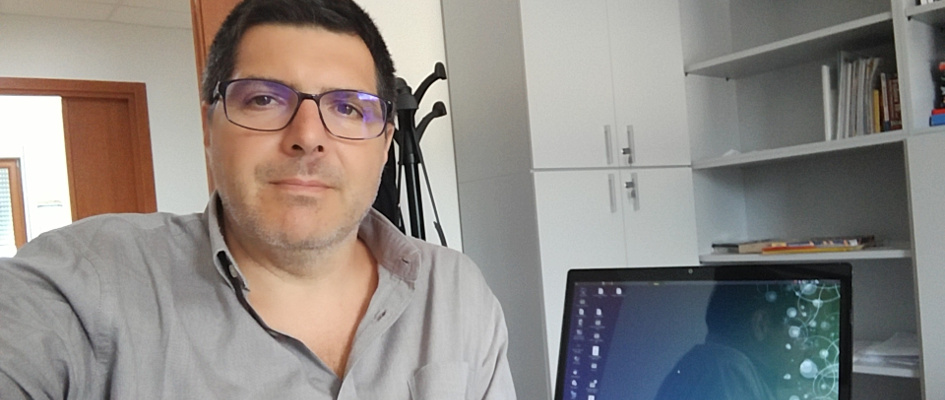We recently interviewed Sumantro Mukherjee on how he uses Fedora. This is part of a series on the Fedora Magazine. The series profiles Fedora users and how they use Fedora to get things done. Contact us on the feedback form to express your interest in becoming a interviewee.
Who is Sumantro Mukherjee?
Sumantro Mukherjee started using Linux in his freshman year. His interest in web development exposed him to open standards which ignited a desire to use an open source operating system. He learned about Fedora from a post on ‘Digit’ about Fedora 13. He enjoys listening to music, traveling and collecting currencies of different countries. Mukherjee was involved with open source before using Linux. Sumantro contributed to Firefox OS, Mozilla and Wikipedia.
Biryani, a mixed rice dish, is Mukherjee’s favorite food. Interstellar and Inception are Sumantro’s favorite movies. “My favorite parts of of the movie is the docking scene.” Sumantro continued, “space exploration and science fiction are some things which I love reading and watching about.” He enjoys movies that promote how humans can achieve what seems impossible with patience and effort. “Interstellar portrays how people humans can do anything which might seem impossible at first but with patience and effort , everything is possible!”
The Fedora Community
Sumantro found the Fedora community open and receptive to new contributors. “The very first impression was warm and welcoming. Adamw, Kamil, Petr Schindl and Sudhir helped me a lot in getting started.” Mukherjee would like to see improvement in the onboarding process for new contributors. “The Project invites users and contributors from designers to documentation and coders to testers.” Every Fedora user has something good to contribute to Fedora. Making it easier for potential contributors to find an area to contribute in important. On March 2016 Sumantro joined Red Hat as an intern for Fedora Quality Assurance. “Adam Williamson and I started running onboarding calls for Fedora QA which was another essential part to welcome the new contributors and help them understand the testing process.”
Getting started guides:
- https://communityblog.fedoraproject.org/getting-started-fedora-qa-part-1/
- https://communityblog.fedoraproject.org/getting-started-fedora-qa-part-2/
- https://communityblog.fedoraproject.org/getting-started-fedora-qa-part-3/
- https://dzone.com/articles/fedora-update-testing-with-bodhi-fedora-qa
- https://dzone.com/articles/release-validation-testing-in-fedora-qa
Mukherjee is passionate about getting new contributors invovled in the Fedora project. “There is no harm in breaking things while learning and know that the community will help you if you ask the right question and follow the open source etiquette.” His recommendation to new contributors is to “Be vocal , be bold and ask as many times as you want.”
What Hardware and Software?
Sumantro prefers Lenovo T460s and X220s. His T460 is a beast. It has 20GiB of ram, an Intel Skylake i7 and handles his virtual machines with ease. Despite having a laptop he prefers a big screen and uses a Dell monitor. Makherjee also loves to boot Fedora on ARM processors. “I currently use a Raspberry Pi 3 and a Samsung Artik to test Fedora ARM.”

His desktop environment is Gnome with Wayland. Sumantro uses Sublime for web development, and Vim for shell scripts and Python. Mukeherjee’s terminal of choice is Terminator. For version control he uses Git, Github and Arcanist. “Arcanist is a wrapper script that sits on top of other tools (e.g., Differential, linters, unit test frameworks, Git, Mercurial, and SVN) and provides pretty good command-line access to manage code review and perform some related revision control operations.”










































Ilya Lipnitsky
idk, how people using gnome, without any customization.
Mehdi
I have been a loyal Fedora user for over a year now, and I am enjoying its vast, live and vivid ecosystem. I do not need to use Windows anymore at all! I deliver my documents in LibreOffice format and I encourage people to adopt it. Every day I appreciate more the potentials of my magic Linux box and how far I can go with it. First, I looked at Linux out of curiosity, now I stick to it out of necessity. I can do anything I want with Fedora and I love it!
karl
Hello!
This is my first time here and think that this is a good blog because there some good tips in it and it is also a very active one.
Thanks!